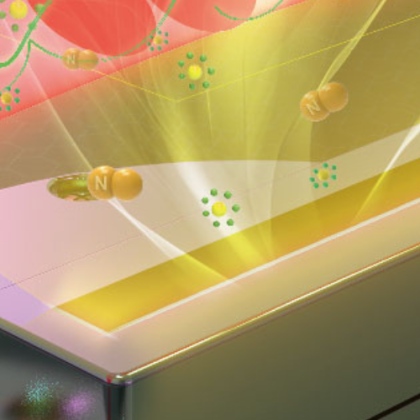On the cover of HPL: A multichannel THz spectrometer for diagnosing terahertz radiation from intense laser-solid interactions
Intense THz radiation sources have attracted increasing research interest due to their applications in coherent and incoherent control of matter, light and electron beams. With terawatt and petawatt laser systems, THz radiation from intense laser-plasma interactions (ILPI) has been demonstrated as a novel intense THz source. The measurement of THz spectrum is very important to determine the generation mechanisms of the THz sources.
However, the existing THz spectrum measurement techniques do not work for ILPI-based THz sources. This is because the repetition rate of ILPI-based THz sources is quite low at present, typically below 1 Hz, even in single shot. As a result, multi-shot scanning methods, such as electro-optic sampling and autocorrelation measurement with a Michelson interferometer, are almost impossible to characterize the ILPI sources. Moreover, the bandwidth of ILPI THz sources can reach tens of THz, which also limits the application of electro-optic sampling techniques since the effective bandwidth is only several THz for common electrooptical crystals such as ZnTe and GaP.
New diagnosing methods or techniques, which can deliver single-shot and broad-band spectral measurements, should be developed. A research group from Beijing National Laboratory for Condensed Matter Physics, Institute of Physics, Chinese Academy of Sciences developed a multichannel calorimeter system which was used in a single-shot way to characterize the spectrum of THz radiation in high-power picosecond laser-solid interaction experiment. THz radiation from target front surface propagates backward relative to the incident laser, which is referred as backward THz radiation (BTR). A number of mechanisms are proposed to be responsible for the BTR generation, such as coherent transition radiation, linear mode conversion, and surface fast electron currents. In the experiment, the dependence of the BTR energy and spectrum on laser energy, target thickness and pre-plasma scale length is studied. By comparing the experimental results with theoretical mechanisms, it is concluded that coherent transition radiation is responsible for the low frequency component (< 1 THz) of BTR. The Linear Mode Conversion mechanism starts to work when a large-scale pre-plasma is formed in the target front surface, which enhances the high frequency components (> 3 THz). The research results are published in High Power Laser Science and Engineering, Volume 7, Issue 1, 2019 (H. Liu et al, Study of backward terahertz radiation from intense picosecond laser–solid interactions using a multichannel calorimeter system)
“The method of THz radiation spectrum measurement used in the article is not novel, but it provides a valid way to characterize the ILPL sources. And the spectrometer will play an important role in the studies and applications of ILPI THz sources based on large-scale laser facilities.” said Profess Yutong Li.
The multichannel calorimeter system developed in this work provides a convenient single-shot method to study the generation mechanism of the broad-band THz radiation generated in large laser facility-based experiments. The instrument should be updated in the future to improve its spectral resolution.








